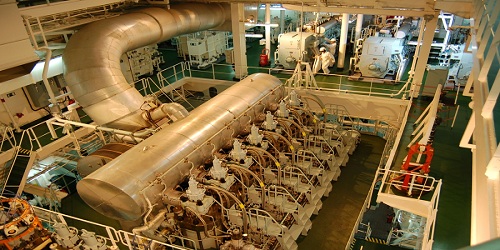Most Popular
-
Technology to reduce Ship fuel consumption
Fuel Oil Emulsion (FOE) technology by Blended Fuel Solutions burns more completely than unmodified f.. -
IoT in Maritime
Despite the fact ships carried an estimated 9.6 billion tons of cargo in 2013 – around 80% of glob.. -
Maintenance of Emergency Generators on Ship
In an emergency situation every emergency equipment or system provided on board is an important life..
TYPES OF MAINTENANCE PRACTICE USED IN SHIP
- Periodic or Planned Maintenance System: This time based monitoring system is commonly employed on board ships that includes periodic inspection, overhauling, replacing components of a particular machine. It is costly and involves considerable man power
- Preventive Maintenance: In preventive maintenance, regular inspections, cleaning, lubrication, re-assembly is carried out as per the equipment’s maintenance schedule and conditional analysis which helps in retaining the equipment’s healthy working condition so as to prevent any further deterioration to the equipment.
- Breakdown Maintenance: Whenever shipboard machinery fails or equipment breaks down, the repairs that follow are known as Breakdown Maintenance. Generally a breakdown maintenance is avoided when at sea due to limited availability of resources unless the equipment is critical and in-use.
BROADER DEFINITION OF PREDICTIVE MAINTENANCE
It is a technique that helps us decide or predict the next maintenance cycle of the in-service machinery or equipment. It is also by far the most cost friendly approach when compared to the preventive or time based maintenance methods.
Condition based maintenance or Predictive Maintenance is a proactive approach to solving unplanned interruptions due to equipment failure that eventually resulted in a costly maritime “downtime” affair. This approach is rather an abstract of predictions as compared to the preventive maintenance system followed religiously on board ships. The primary aspect of such maintenance is the proactive analyses that reveals and ascertain subsequent trends of the shipboard equipment or the machinery’s conditions, thereby warning us of the looming failure. This ensures that the ship’s staff understands the equipment’s current as well as future functioning abilities.
ADVANTAGES OF PREDICTIVE MAINTENANCE
These following are the advantages of Predictive Maintenance:
- Ship staff would be well prepared to plan their maintenance schedule in order to curtail or even eliminate overheads
- Inventories for stocks and spares will be minimized as the parts need not be asked for ‘in-advance’ that would otherwise be called for during machinery breakdowns
- The technique will ensure that machinery or the equipment operates at an optimal operational level that would in turn save energy consumption and thereby the working costs
- Intend increasing shelf life of the components, lasting longer and performing better
- Reduction in unexpected machinery failures
- Cut back in maintenance costs, repair costs, etc.
- Increases marine plant capability
- Prevents additional work load for the ship’s crew. Such techniques, in fact, raise the working morale among the crew members, as the crew becomes aware of the equipment status and its subsequent condition in the future
- Promotes and consequently improves safe working culture on board due to the maintenance plan’s look ahead technique.
- Ensures an Eco-friendly work environment with low energy consumption and high environmental safety
